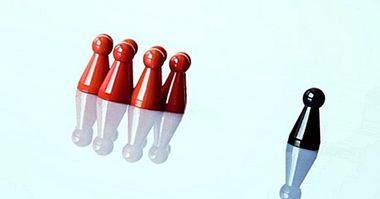Boreout syndrome: boredom at work
As we already commented in the article 'Burnout (Burning Syndrome): how to detect it and take measures', stress and job satisfaction have become an important factor during the last decades in the work context.
Burnout is among the most difficult problems in the field of occupational safety and health, since it affects people and organizations significantly.
Boredom at work and occupational health
In recent years, occupational health experts are warning of another phenomenon that negatively affects the welfare of many employees, the "Boreout syndrome " This syndrome, coined by Philippe Rothlin and Peter R. Werder in 2007, is the complete opposite of "being burned", and is characterized by a "chronic boredom". The Burnout and the Boreout are opposite ends of a continuum, but both are equal harmful to the health of workers , that is, they are two sides of the same coin.
Although many may think that doing nothing at work is a dream come true, the reality is totally different: the obligation to be at work for hours without knowing what to do is a demoralizing situation. In addition, the Boreout Syndrome can trigger what human resources experts call "labor presentism."
A study by Dan Malachowski concluded that 33% of respondents felt that their work it did not present any challenge and that they spent an average of two hours a day to kill time on social networks . The same investigation affirmed that 15% of the personnel of the offices at world-wide level bores to him its work. Another survey, this time from the TMI consultancy, found that 80% of the staff did not feel involved in their work, was indifferent to the successes and failures of their organization.
How is this syndrome manifested?
The Boreout has 3 characteristics that Philippe Rothlin and Peter R. Werder describe in their book "The New Boreout Work Syndrome" published in 2009.
1. Underage , with repetitive and monotonous tasks. Perform meaningless tasks. It gives the feeling of being able to give or not to be giving everything that one can give. Sensation of being wasted.
2. Boredom , defined as a mood of apathy, apathy and doubt because the employee does not know what to do during the day.
3. Disinterest , for lack of identification with work
The causes of the Boreout
According to the same authors, this syndrome occurs for several reasons:
- Fulfillment of tasks below capabilities of the employee
- The worker is in a job that does not produce a great motivation or has expectations that differ from the position in which it is.
- Lack of planning or lack of Specification of functions of the job, which can lead to role ambiguity.
- Hoarding tasks more motivating by superiors or colleagues with more seniority, leaving the rest the most repetitive.
- Realization of monotonous tasks every day and for hours.
- The organizational structure or the leadership style that prevents workers from participating or developing their potential within the company.
- Impossibility of promotion or increase in salary and lack of stimulation or recognition on the part of their superiors, for which work effort is not associated with the results obtained. In the long run learned helplessness occurs.
- Overqualification in knowledge or experience for a job, which can lead to job dissatisfaction.
The prevention of Boreout
The Foundation for the Prevention of Occupational Risks and the Observatory of Psychosocial Risks of the UGT recommend the following points to prevent Boreout in workers:
- Improve the working environment promoting teamwork.
- Increase the degree of autonomy and control at work.
- Clearly define the functions and the role of each worker in the organization.
- Establish clear lines of authority in responsibility.
- Facilitate the necessary resources for the correct development of the activity.
- Programs aimed at acquisition and dexterity in improving emotional control and problem solving.
- Improve the communication networks and promote the participation of workers in the organization.
- Encourage the flexible schedule .
- To ease training and information about the work to develop.
Conclusions
Although it may seem that the employee who suffers Boreout is simply a bum, it is really about a failure in human resources policy of the company. Good practices in personnel management are important for the future development of this phenomenon among employees. In this way, a correct selection process will allow the incorporation of a suitable candidate and will affect their future performance. When we talk about a correct selection process, we speak of a process that takes into account both the needs of the job, the needs of the worker and the needs of the organization.
A good one People Management It entails having updated workloads based on the type of tasks performed and taking into account the importance of the leader when it comes to minimizing the impact of Boreout in the company. It is a guarantee of health in the company to maintain motivated worker and to be able to influence their activity in a positive way.



















